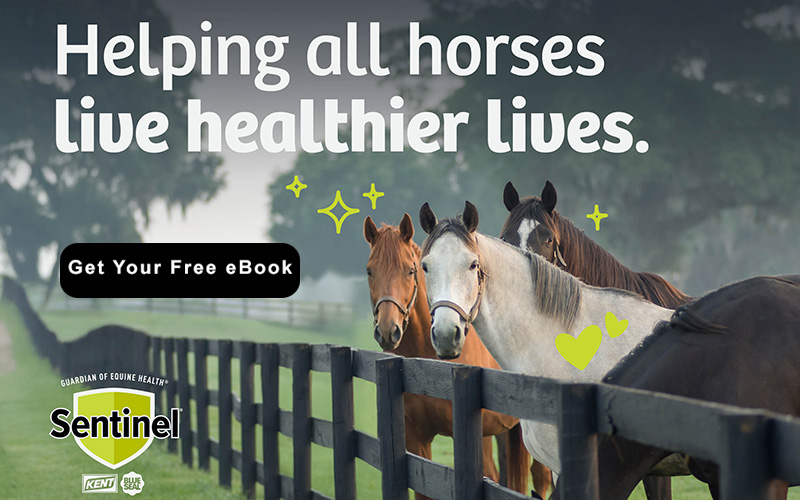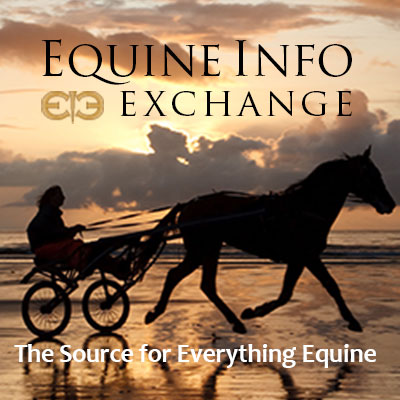Health & Education
We all want the best care possible for our horses. The Heath & Education section covers both Learning Institutions, Organizations as well as many sources for equine assistance including Veterinarians and Farriers.
For those who want a to formally study horses, the Education section includes College Riding, Equine Studies, and Veterinary Schools. Learn about the wide variety of horses in the Horse Breeds section. Supplements and Treatments Therapy are also included in the section.
Everyone can learn from Fine Art and there are some specialty Museums that might surprise you.
Horses as a therapy partner enrich the lives of the disabled. These facilities are listed in our Therapeutic Riding section. To help children and young adults build confidence and grow emotionally, please see the resources available on the Youth Outreach page.
Looking for a place to keep your horse? You can find it in the Horse Boarding section. Traveling? Find a Shipping company or Horse Sitting service if your horse is staying home!
Want to stay up to date with the latest training clinics or professional conferences? Take a look at our Calendar of Events for Health & Education for the dates and locations of upcoming events.
Do we need to add more? Please use the useful feedback link and let us know!
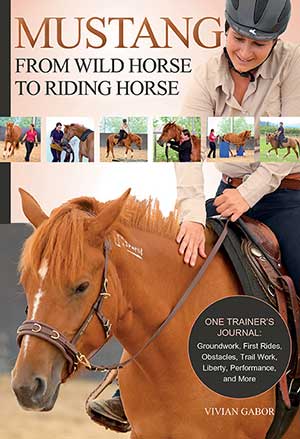
By Vivian Gabor
Neither starting a young horse over the course of three months nor preparing for a clinic or show is out of the ordinary for me as a trainer. The special thing about the challenge I write about here, however, was that the young horse I was training was an American Mustang, born in the wild and completely unused to humans, unlike our domestic horses.
I became involved in the “Mustang Makeover” in Germany, which is organized by “American Mustang Germany” (www.american-mustang.de), a group that is working to bring attention to the plight of the Mustang in the wild, as well as those in holding facilities. For the Makeover in Germany, between 15 and 20 Mustangs are imported from a holding facility and made available to trainers who have been vetted and selected to work with them.
For 90 days, the trainers have the challenge of helping their wild horses become accustomed to the new environment, to people, and to the process of saddle training. At the end of this three-month training period, there is a large competition with almost 6,000 people in the audience to experience the event live, and at the end, maybe bid for a Mustang in a special auction.
The Makeover in Germany is also watched by approximately 40,000 fans on social media, so not only are a number of Mustangs given new homes, but many new people are introduced to the problems Mustangs face and how different organizations are trying to solve them. Those interested can follow along with all the participating trainers and experience the exciting progress made with each Mustang over the 90 days. So the Makeover is an event that shows a variety of training methods and encourages thought and discussion regarding the kinds of techniques you would like to use with your own horse.
When I first heard about the Mustang Makeover, I was interested to work with a wild horse, not only as a horse trainer, but also as a behavioral biologist and equine scientist. I like to teach others about horse-appropriate training methodology, but I also like to educate myself and face new, intriguing tasks and challenges. I consider myself fortunate to have been given a chance to be involved in this special adventure.
Read more: Why I Did the Mustang Makeover—and Why I’d Do It Again
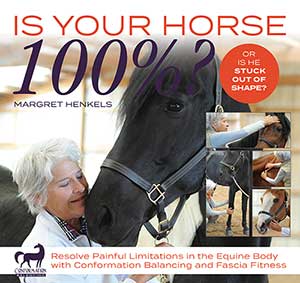
by Margret Henkels
The tail is a major part of the hindquarters puzzle. When you first handle it, the tail seems to have little muscle, yet it is essential to freedom of movement for the horse’s hindquarters. Tail releases for stiff tail vertebrae are wonderful paths to hindquarters progress. It’s a miraculous change for such a huge dense area of muscle through a small, easy-to-handle part of the horse. An expressive tail is easy to notice.
The tail is the horse’s coccyx. As you know, it’s a painful injury when you fall on your tailbone. The horse uses his tail to balance. The tail is kept fluid by movement. Wild horses move a distance of at least 50 miles a day over varied terrain. A much more “sedentary” lifestyle means the horse’s tail becomes less flexible: it loses articulation of the vertebrae.
Many tails are like broomsticks: they are stiff, unable to bend laterally, or curve upward. Very few tails are able to curl back to touch the croup, as they would if flexible. In most cases, the horse’s tail can bend laterally somewhat and, perhaps, curl halfway up toward his croup, but that is all he can allow. Many horses are concerned when you begin to handle their tail at all.
Complete release of the tail is vital to improving self-carriage and collection. You can’t spend too much time releasing a tail. Short opportunities bring good results, even when the horse snacks, or when we spend time companionably. The horse loves this kind of bodywork.
Read more: Improve the Horse’s Balance, Movement, and Self-Carriage with These Easy Tail Exercises
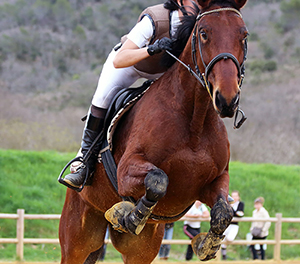
Understanding horse arthritis treatment and horse joint health
Thoroughbred mare, Tiz Cha Cha, never traveled balanced to the left. When she would collect in dressage or frame over a jump, she would become aggressive with ears pinned, relentlessly throw her head or rear up dangerously. Her behavior was chalked up to being a “hot” off-the-track Thoroughbred; however, a series of X-rays revealed what the human eye could not see -- a C1 fracture of the vertebrae, nearest the poll, causing her significant pain from bone-on-bone contact and arthritis.
What is equine osteoarthritis or degenerative joint disease?
Equine degenerative joint disease (DJD) is often referred to as equine osteoarthritis (OA). This chronic disease causes degeneration of the joints and results in pain, inflammation and reduced flexibility. Any joint in a horse’s body can be affected, and all horses regardless of age, breed or discipline can be impacted. It is estimated that OA is responsible for up to 60 percent of all lameness in horses.
Do different equine sports affect specific joints?
Although any horse in any discipline can be affected by OA, there are common themes and joint problems that occur in the varying equine sports. Such as for cutting and reining horses, who have greater impact on their hocks and stifles causing them to have heightened OA risk to these joints. Additionally, hunter jumpers are more likely to have front limb lameness in the coffin or fetlock joints. Any joint that is more significantly used on a horse increases its likelihood for developing OA.

by Sandra Beaulieu
I believe that riding horses is similar to playing golf. It requires patience, body control, and the ability to focus. However, there is one big difference ... the golf club isn’t alive! There really isn’t much else that compares to riding a horse. Ballroom dancing is similar, perhaps more so if you imagine a partner who speaks a different language. Riding horses requires us to learn their language, adjust our natural reactions, and develop feel and timing.
When training a horse, you are dealing with an emotional animal that is so aware of body language it is as if he can read your mind. Music connects with humans on an emotional level and can affect us strongly. If we are affected in a positive way—our mood brightens or our energy is balanced—then the horse will feel the benefits of that as well.
Music can also improve the way we progress through the Training Scale—the six classical building blocks of horse training: rhythm, suppleness, contact, impulsion, straightness, and collection. Rhythm and tempo are at the “base” of the Training Scale, with the other building blocks progressively “stacked” upon them. Perhaps you have a young horse that is learning how to maintain a steady trot, or you are a beginner rider that is learning how to post. In these cases, music can regulate your body, helping you focus on a metronome-like beat in a fun way.
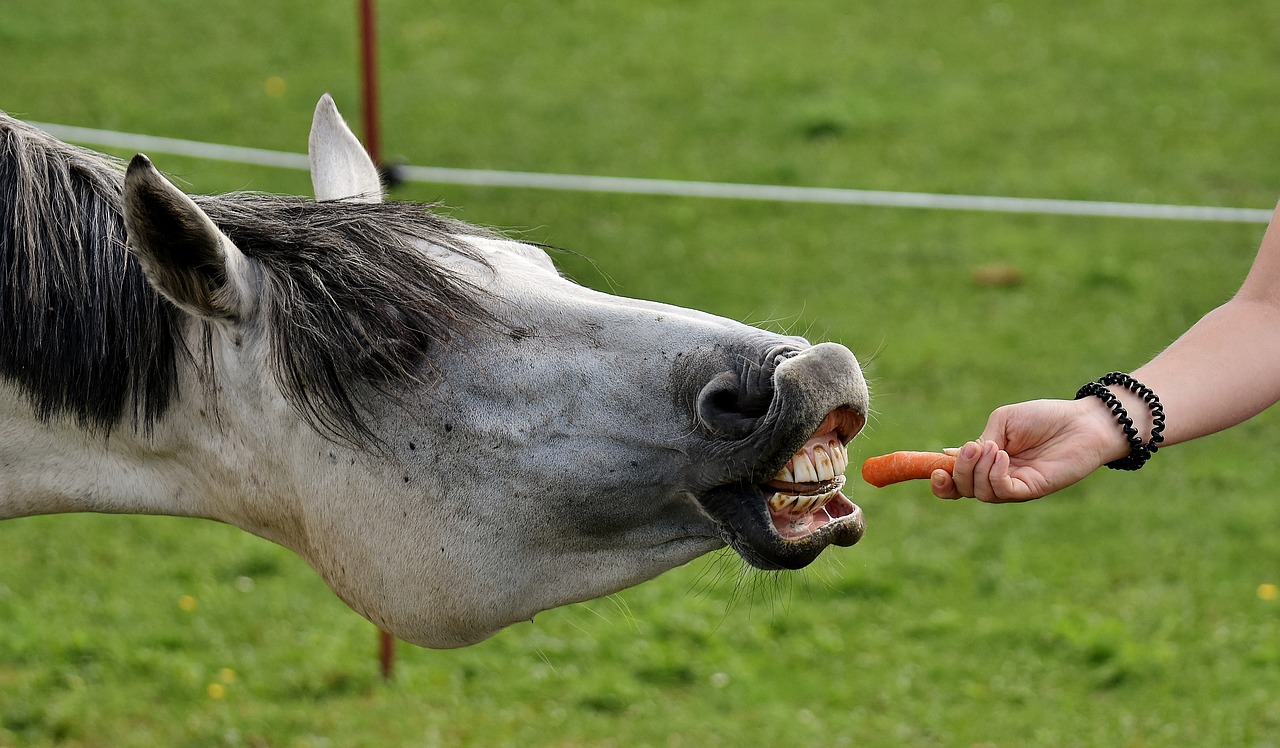
by Juliet M. Getty, Ph.D.
When we can offer a safe, caring home to a severely neglected horse, everyone in the horse world cheers. If you have recently adopted a rescue horse, let me first commend you for your actions. Saving a horse that is in desperate need of care and nursing him back to health can be one of the most gratifying experiences a horse owner can have. But you must be committed to giving him a lot of time and attention. The transition period is critical. He'll need to be moved in and out of pasture throughout the day, fed hay nearly every couple of hours, and given frequent supplemental meals until he gets to where he can hold his own.
If your horse is very thin due to starvation, you will want to proceed slowly and with caution, giving his body a chance to adjust to change with each step. Some horses are in such poor condition they are unable to eat. In this extreme situation, your veterinarian will use a stomach tube to feed the horse. This is a short term procedure with the goal of getting your horse interested in eating again.
Ulcers can complicate the rehabilitation process. Retired race horses almost invariably have ulcers. Your veterinarian may prescribe an ulcer medication, but this can only be used for a month or so. The three long term components of healing an ulcer are: chewing on hay or pasture at all times, plenty of water, and reduction in stress.
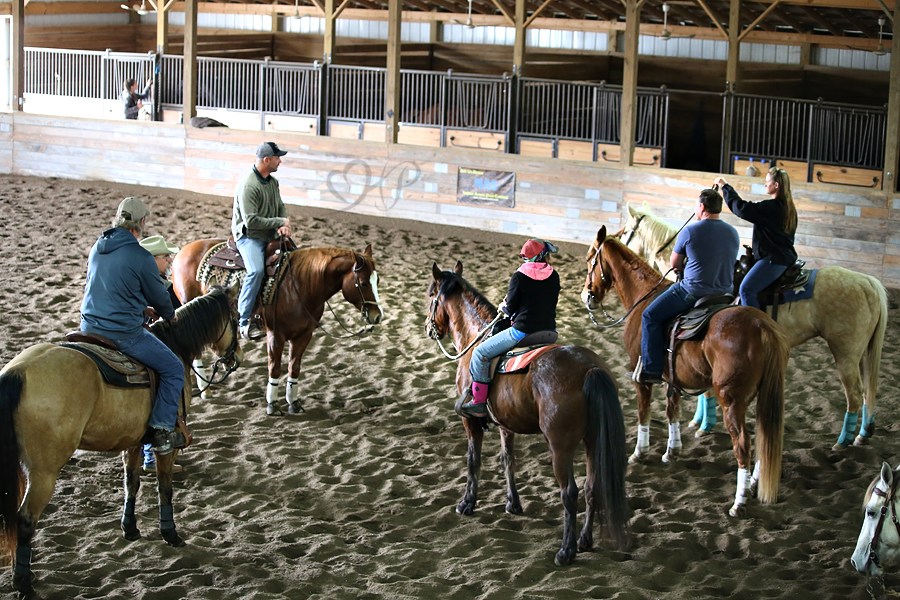
by T. Creamer, Director of Heart of Phoenix Equine Rescue, Inc.
Collaboration means success.
We can’t have all things in common, but we can have some things where we are in accord.
The deep, abiding love of horses – the value of the horse and the hope we can make more horsemen and women better . . .these are things we can build partnerships upon.
So when we were invited, at no cost to Heart of Phoenix, to take part in the Josh Lyons- Josh Lyons/Lyons Legacy – Trainer’s Clinic last week, we were incredibly thankful because it meant that message of “Let’s Help Horses and Horse People” had connected with the industry insiders, but we also felt that it proved the industry is looking to work toward an amazing tomorrow for horses!
We are, too.
Read more: Josh Lyons with Lyons Legacy Partner With Horses in Need
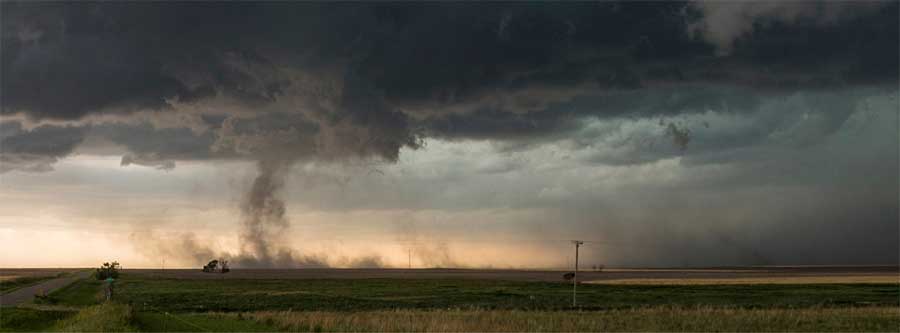
by Kelly Melvin, Graduate Research Assistant
Jennie Ivey, PhD, PAS, Assistant Professor and Extension Equine Specialist, Department of Animal Science, Univ. of Tennessee
In light of recent flooding, wildfires, and other natural disasters in the United States, there has been increased concern regarding how to prepare horse farms for various natural disaster situations. Being prepared before disasters occur is the best way to increase your animal’s chance of survival and safety.
Before a Disaster Hits
Do you have an updated yearly plan of action for emergency situations? Having a plan of action before a disaster hits can help reduce both human and animal stress, increase survival, and minimize damages. Always heed evacuation notices to keep you and your family safe.
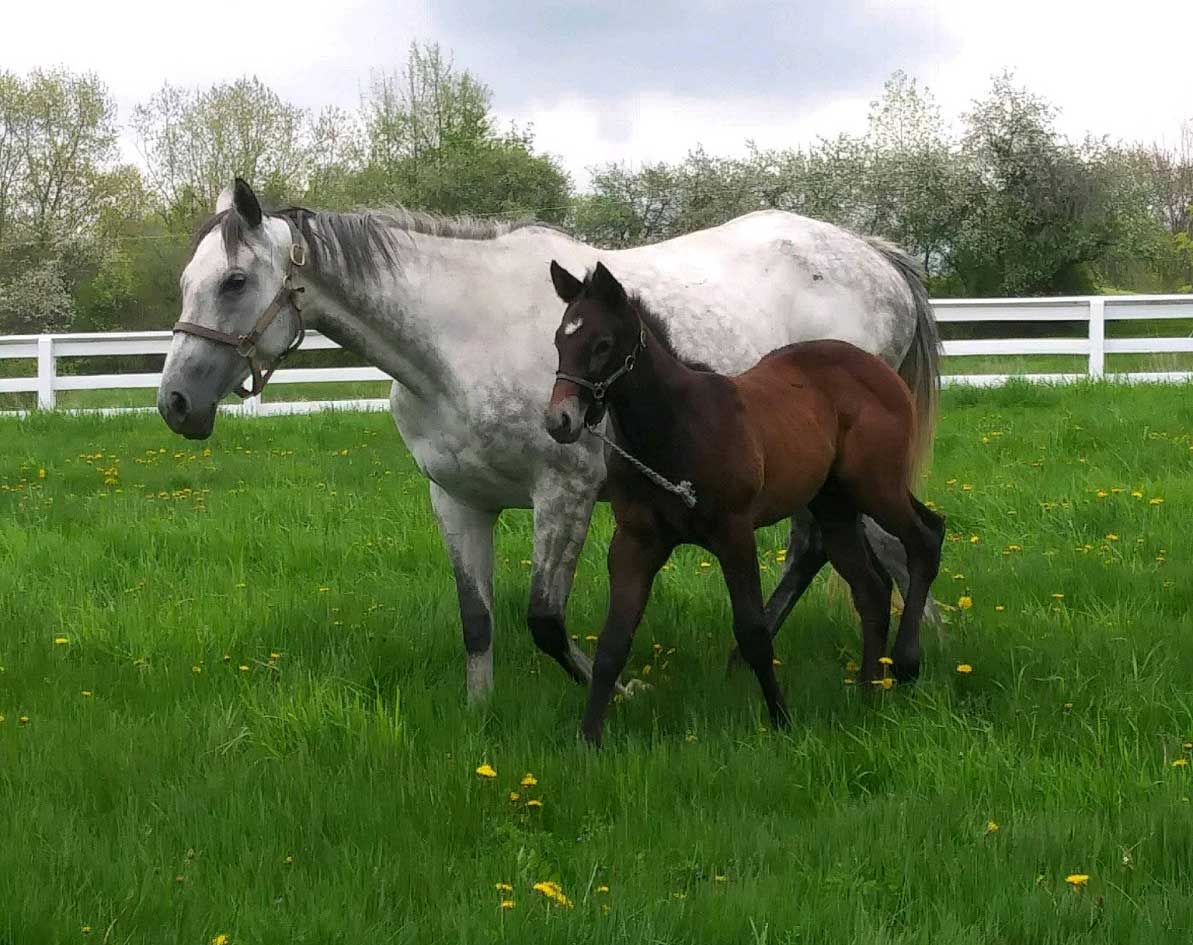
by Juliet M. Getty, Ph.D.
Colostrum -- you know it as the mare's first milk. It is a complex fluid, rich in nutrients and immune-regulating compounds, all designed to give the newborn foal the immune support he needs to thrive. Unlike humans, who are born with an initial level of immunity, newborn horses do not benefit from any placental transfer of immunoglobulins; therefore they must consume colostrum in the first few hours of life in order to survive.
It is fascinating to note that animal species can be divided into three classes based on the way immunoglobulins are transferred to newborns.[i] (1) via placental transfer to the fetus before birth (primates, including humans, rabbits, and guinea pigs); (2) through both placental transfer and through mammary gland secretion of colostrum (rats, mice, cats, and dogs); (3) strictly from mammary secretions (ungulates such as horses, pigs, cows, sheep, and goats). Though human babies absorb only a very small amount of immunoglobulins from the small intestine, the presence of immunoglobulins throughout the gastrointestinal tract will bind bacteria, toxins, and other macromolecules, inhibiting their ability to be absorbed into the blood stream, thereby improving the immune response.[ii]
But does colostrum benefit adult horses?
I was skeptical at first. After all, immunoglobulins found in colostrum are very large proteins, far too large to be absorbed directly into the bloodstream at an advanced age. Even newborn foals are best able to absorb these macromolecules only within the first 6 to 8 hours of life. After that, the intestinal cells gradually stop absorbing immunoglobulins -a process known as "closure."[iii] I reasoned that in adult animals, these proteins must be digested, starting in the stomach and later in the small intestine, resulting in pieces of the original - certainly not the entire immunoglobulin. Well, it turns out that I was only partially correct.
You see, while most of the proteins do end up being degraded by digestive enzymes, researchers at the University of Illinois at Urbana-Champaign, Aarhus University in Denmark, and the University of Calgary, Alberta, Canada, revealed that some portion of these large molecules is actually transported across the intestinal lining intact, remaining capable of binding to an antigen.[iv] That means supplementing colostrum to adults actually does have an impact on health. Furthermore, colostrum contains more than just immunoglobulins. It protects overall wellbeing by providing a wide range of factors including lactoferrin, oligosaccharides, peptides, leukocytes, and growth factors.[v]
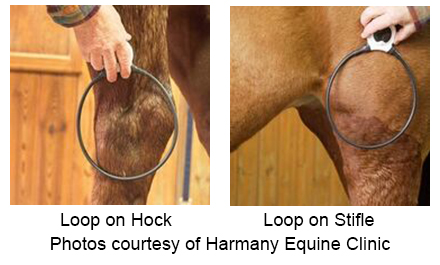
by Joyce Harman, DVM, MRCVS
PEMF (Pulsed Electromagnetic Field) therapies, the new “in” thing?
Pulsed Electromagnetic Field (PEMF) is one of the latest things in the horse world (and small animals too). Or is it? Actually, the equipment and techniques have been around for 70 years or more. Back then not much was known about how the devices worked, and what they really did in the body. Even when I finished veterinary school (back in 1984) the “Blue Boot” was a semi-portable, but expensive and cumbersome unit being used to heal non-union fractures.
The science and the devices have come a long way since then. Compact portable and affordable units are available as well as large units designed for use on the whole body. Units now can have many adjustments and come in all sizes and cost levels.
The good thing is that most PEMF devices do work and are a positive form of therapy that can be done by the animal’s owner.
What is PEMF?
The body is an electrical machine, with nerves conducting electricity to every cell. PEMF can enhance the transmission of the internal electrical charges that keep the cells running. Inside each cell there are many metabolic processes happening that all require cellular energy to fuel them. The PEMF wave improves the internal cellular energy.
- Deworming Your Horse? Reference this Comprehensive Q&A
- Equine Enteric Coronavirus
- Is Your Horse Protected Against These Disease Risks?
- Equine-Facilitated Psychotherapy: Facing Trauma With a Horse by Their Sides
- University of Kentucky’s Department of Veterinary Science Responds to Nocardioform Placentitis
- Odd Couples
- Born to Stretch — Long and Low
- Don’t Be So Hard On Yourself; 10 Ways to Stay Positive About Showing
- 3 Tips for Horse Riding With Epilepsy (and Confidence)
- Physical Signs of Damage Caused by Ill-Fitting Saddles
- Conception Failure in Mares: Seven Causes
- Horses Blink Less, Twitch Eyelids More When Stressed, U of G Researchers Find
- Maintain Your Horse’s Safety This New Year's Eve
- Caring for “Winter Woolies”
- Equestrian Programs Benefit Veterans
- New Allergens Associated with Severe Equine Asthma
- Testing a New Therapy for Horses Struggling to Breathe
- Minerals and the EMS Equine
- Straight From the Horse’s Mouth: Equine Dentistry Basics
- Nutrition for the Pregnant Mare






